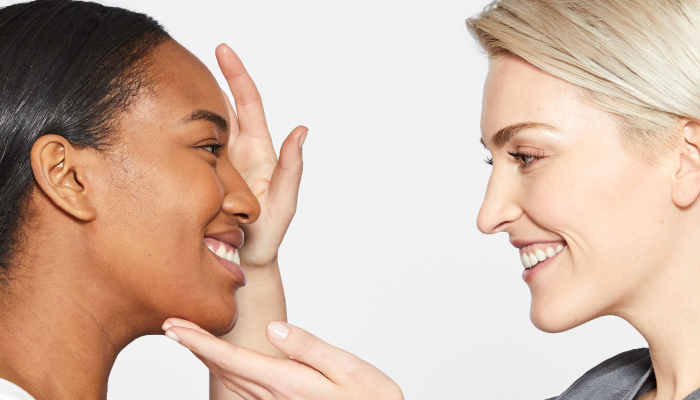3 min read
Let’s talk melanin
05/20/2022 / Last Edited 06/02/2025When speaking with clients about the best products and skin treatments for their skin, it’s important to understand the science behind skin tone more broadly and the process behind our vital pigment: melanin.

When speaking with clients about the best products and skin treatments for their skin, it’s important to understand the science behind skin tone more broadly and the process behind our vital pigment: melanin.
Most clients know that melanin is the protein that gives our skin its natural color. However, many people are not aware that melanin is also known to protect skin against the harmful effects of UV (ultraviolet) rays, oxidative stress, and DNA damage. Just as we hold an umbrella over our heads to protect against the sun and rain, melanin forms a protective cap over our skin cells’ DNA.
Many people are also surprised to learn that much like sunscreen, melanin has an SPF. Scientists debate melanin’s exact SPF value – but we do know that it helps to absorb or redistribute some of the UV light we’re exposed to.
Melanin also presents free radical-scavenging properties to help protect skin against oxidative stress. Reactive Oxygen Species (ROS) – better known as free radicals – are produced in the skin under the influence of UV radiation and pollution. These compounds are highly reactive and can induce DNA damage in our epidermal skin cells.
types of melanin
Our skin color is determined by the amount and type of melanin the skin produces, as well as its distribution in the surrounding skin cells (keratinocytes). Skin produces two main types of melanin:
• Eumelanin is a brown-black pigment, and the most common pigment that we see in skin. The content and intensity of this melanin is correlated to its level of UV protection.
• Pheomelanin is a yellow-red pigment, which we typically see in people with lighter skin or red hair. This type of melanin offers little to no UV protection.
what makes melanin?
Melanocytes are the cells responsible for producing melanin and transferring it to the surrounding skin cells (keratinocytes). Within a melanocyte, melanin is produced and packaged into melanosomes. The arm-like protrusions from the melanocyte are called dendrites. These dendrites extend into the surrounding keratinocytes to deliver the melanosomes. The melanosomes cluster over the nucleus of the keratinocytes to protect skin cells’ DNA.
the melanosome
The primary determinant of skin color is not the number of melanocytes a person has; rather, it’s their activity. All humans appear to have the same number of melanocytes and keratinocytes (a ratio of 1:36). The size of melanosomes (melanin-containing envelopes), however, can vary dramatically between individuals; this difference contributes to skin color. As keratinocytes migrate to the superficial layers of the epidermis, the membrane of the melanosomes is progressively digested by enzymes. This process occurs more or less easily depending on the morphology of the melanosomes; this, too, plays a role in the color of the skin.

Content Contributors
Beth Bialko
Director, Global Education Development




